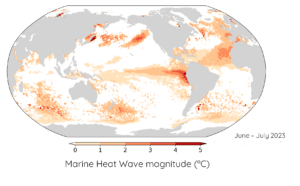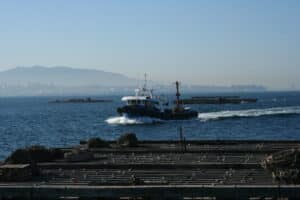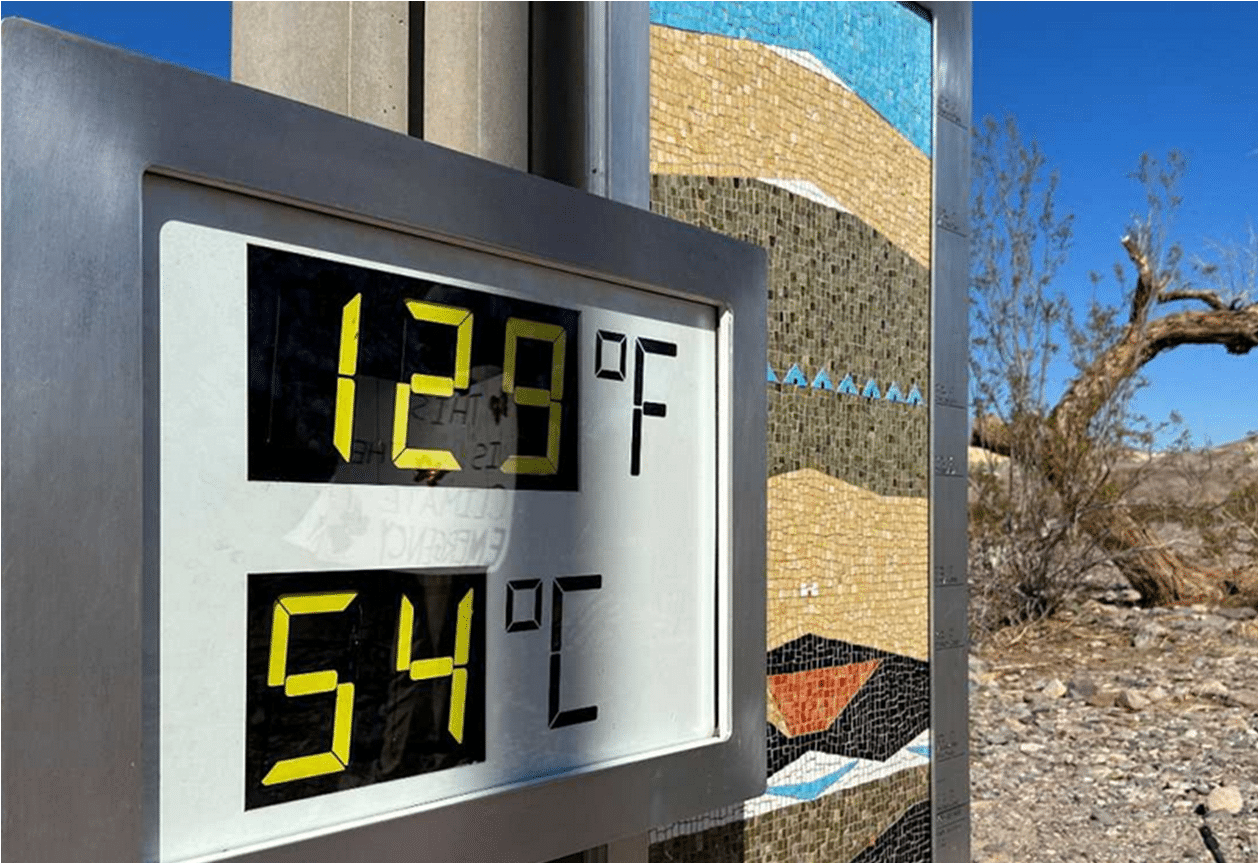Photo: Thermometer in Death Valley (California). Source Rtve.
During this summer, the Galician waters and the entire eastern Atlantic Ocean might be described as a pot full of salty water close to the boiling point: perfect for cooking spaghetti, but inappropriate for marine life. These sharp and sudden increases in temperatures are known as marine heat waves and reflect inappropriate seawater temperatures for this time of the year.
On the Atlantic coast of Galicia, marine currents are associated with the wind regime, whose direction, intensity and persistence determine the dominant circulation. As a general pattern, northerly winds move nearshore surface water toward the ocean during spring and summer, which is replaced by deep, nutrient-rich water. The addition of nutrients during the time of greatest insolation of the year in the most superficial layers triggers massive microalgae blooms, which despite being invisible to the naked eye, make this Atlantic region one of the most productive marine ecosystems in the world.

Global map that reflects the anomaly of temperature(ºC) for the months of June and July 2023 with respect to the average.
During the last decades, changes in the wind regime has been observed on the Atlantic coast of Galicia. The time series suggest that the persistence and intensity of the necessary northerly winds has a decreasing trend, which will undoubtedly cause a change in circulation. If the winds stop blowing -as is happening this year- the arrival of cold waters from the deep ocean stops, the waters gradually warm up and food runs out. This fact for ordinary mortals can mean enjoying swimming in waters around 20-21ºC. However, the consequences for the marine ecosystem could be a complete disaster.
Let’s take as an example a sector as strategic as the mussel cultivation. Its production in the Galician rías is around 250,000 tons per year and represents a capital movement of around 100 million euros. An economic activity of this magnitude depends entirely on the northerly winds blowing on our coasts. The mussel is a filtering organism, being able to filter 8 liters of seawater every hour to capture the organic particles that are in the water. The highest quality food for these little buddhas of the sea are microalgae, and therefore their absence in the water means decrease meat content of mussels and very low economic productivity. In addition, the absence of winds with the consequent warming of the waters favors the proliferation of toxic microalgae, the famous red tides. Scientific data shows that these events increase in number and duration because toxic microalgae species are perfectly adapted to warmer waters. This fact will undoubtedly mean an increase in the number of days that mussel exploitation will have to be suspended.

Boat for recoverting mussels from rafts in the Ría de Vigo.
For all these reasons, it is vital for our future to know that heat waves on land and at sea are the result of our way of life. Although the information does not reach the general public, the injection of gases into the atmosphere from the burning of fossil fuels is creating a pollution blanket that does not allow heat to escape into space, warming the atmosphere and of course also the oceans. It is as if in the middle of summer someone told us that with blankets we will sleep better, and despite sweating, we insist that these are the best conditions for sleeping. In my opinion, this demonstrates that we are not very intelligent, especially considering that we are mortgaging future generations to live in a world that they do not deserve.
To know more:
www.marineheatwaves.org


